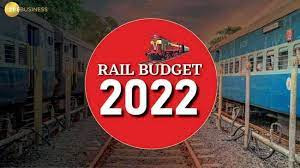When will railways' budget come on track?
While the government's labour to boost semiconductor manufacturing in India is bearing some fruits, it is still toiling hard to bring the railways' expenditure on track. This report explains how

In 2016-17, while 11 per cent of Railways capital expenditure (capex) was funded by internal sources, in 2019-20 the ratio dropped to less than 1%. A 2015 Committee on Restructuring Railways had flagged that over-reliance on borrowings could exacerbate the financial situation of railways.
Yet, financial ratios have deteriorated over the time. The operating ratio—the amount IR spends to earn Rs 100—has increased drastically over the years. In 2012-13, it spent Rs 90 to earn Rs 100; in 2019-20, it had to spend Rs 98 to earn Rs 100.
For the last two years, CAG has been highlighting how Railways is adjusting advance payments to manage its operating ratio. In 2017-18, for instance, Railways took advance payment for freight from NTPC and IRCON, which helped decrease its operating ratio from 102.7 to Rs 98. Similarly, in 2018-19, it took an advance from NTPC and CONCOR to improve its operating ratio from Rs 101.8 to 97.3.
In the recent Union budget, the government hiked capital expenditure by 35.4 %. Of this Rs 7.5 trillion to be spent on capex, one in every five rupees will go towards the railways.
Budget mathematics tends to indicate a revival. Data released by the government shows that receipts are expected to grow 18.8 percent over last year. In contrast, expenses will rise 16.6 per cent in 2022-23, leaving the Railways with Rs 5,360 crore extra for allocation to its other funds -- the depreciation reserve fund is included in these calculations.
The excess only accounts for 2.2 per cent of total receipts; it will be the highest in the last seven years. The calculations are predicated on the back of a 13.6 per cent rise in goods and a whopping and unprecedented 31.8 per cent rise in passenger earnings. In 2021-22, goods revenues grew 23 per cent as the Railways cornered a significant share of freight traffic.
Though the Railways seems to be pulling through in budget mathematics, a Business Standard analysis shows that the space for India’s largest public-sector operator is shrinking.

Barring last year, when passenger revenues jumped 191 per cent on the back of a low base, passenger revenues have never grown in double digits in the last six years. Growth in goods revenue last hit double digits in 2017-18.
Sundry earnings — money the Railways earns from advertising and leasing — were declining before the pandemic hit the sector. The Railways now expects these earnings to grow 42 per cent to Rs 10,000 crore in 2022-23, a target last breached in 2016-17.
Further analysis shows that the Railways has never met its Budget target for passenger earnings in the last six years and has even fallen short of its sundry earnings target .
The failings are evident on the expenditure side as well. Even though the allocation has been reduced in terms of the depreciation reserve fund, the Railways has not even met those targets.
The finances that the Railways accounts for are coming from gross budgetary support and extra-budgetary resources, not from the transport utility’s revenues.
Appropriation to the development fund, capital fund and Rashtriya Rail Sanraksha (partly borne by the central government) have all declined.
In the last six years, the average appropriation to these funds has been just 30 per cent of the budgeted amount. In many years, the appropriation was less than 20 percent of the budgeted amount (see chart 4).
Although the Railways was to contribute Rs 5,000 crore each year to the Rashtriya Rail Sanraksha Kosh for track repair works, by the end of this year, its contribution will be just one-fourth of the budgeted estimates.
Instead, the expenditure is increasingly being shifted to extra-budgetary resources. This year’s demand for grants has also made a provision for the Railways to contribute some amount towards debt servicing. The Centre gave the service provider a break on debt servicing given its dwindling finances. How much of that the organisation can achieve will only be apparent in the coming months.



Comments
Post a Comment